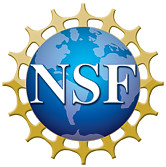 On Thursday I participated in a Phase II National Science Foundation Small Business Innovation Research (NSF SBIR) panel. While I’ve been to Phase I panels before, this was my first Phase II panel. In Phase I companies can request up to $150,000 for 6 months to a year. A company that receives a Phase I award, and successfully delivers on its grant, is eligible to compete in Phase II with a proposal for up to $500,000 for two years.
On Thursday I participated in a Phase II National Science Foundation Small Business Innovation Research (NSF SBIR) panel. While I’ve been to Phase I panels before, this was my first Phase II panel. In Phase I companies can request up to $150,000 for 6 months to a year. A company that receives a Phase I award, and successfully delivers on its grant, is eligible to compete in Phase II with a proposal for up to $500,000 for two years.
The one thing that always strikes me at the SBIR panels is that proposals have to make a good business case. Panels include both technical experts and business experts and a proposal has to clear the bar with both sets in order to be recommended for funding. I’ve always taken it for granted that an NSF proposal (SBIR or scientific) should make a good argument for why the technology or scientific innovation is worth funding. However, before my involvement in the SBIR review process, I didn’t really think much about the business case to be made when requesting funding for a business venture. In this respect I’m hardly alone: engineers usually don’t spend much time exploring the business side of running a business. At the UNH ECE department we’re looking into alleviating this problem through the involvement of Brad Gillespie in our senior project courses. Brad is a UNH ECE alumnus, Microsoft veteran and business strategy consultant. Read about Brad’s last visit to UNH ECE and check back for more on this in a future post.
So, if you’re a technical person planning to submit an SBIR proposal (note that many federal agencies run SBIR programs, not just the NSF), my advice is this: bring in people who can help you think through (and coherently present in the proposal) a business plan for your venture. Without a compelling business plan your proposal will not be funded.
